02.07.2016: Today I went to the airport to prepare my plane for the bi-annual check (homebuilt planes in Switzerland are checked every two years by the authorities), and while I was checking everything inside the hangar due to some slight rain I heard a big rumble. An Antonov AN-2 appeared outside, taxiing to the fuel station. I later learned that it is temporarily stationed in Lommis, as their home airport Basel is undergoing some apron work and they had to move it somewhere else

I later checked, they took fuel for around 900 Swiss Francs after a one hour sightseeing flight, that gives me fuel for around 30 hours of flying…
03.07.2016: For once we had nice weather, so I decided to also check in flight whether everything with my plane is functioning properly for the bi-annual check.
As can be seen below there were quite some clouds, but no problem as it was a relatively thin layer with only around 50% coverage.
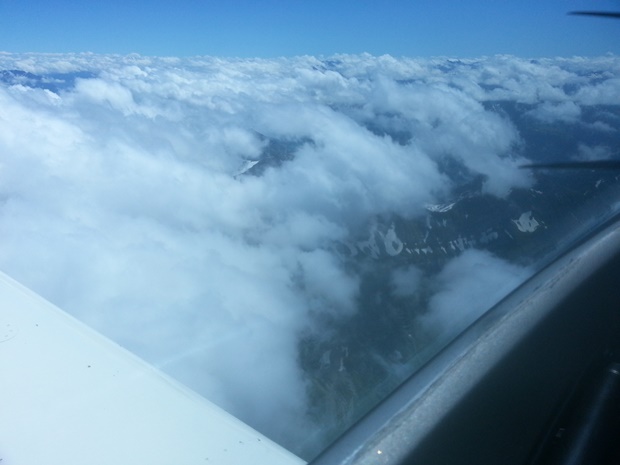
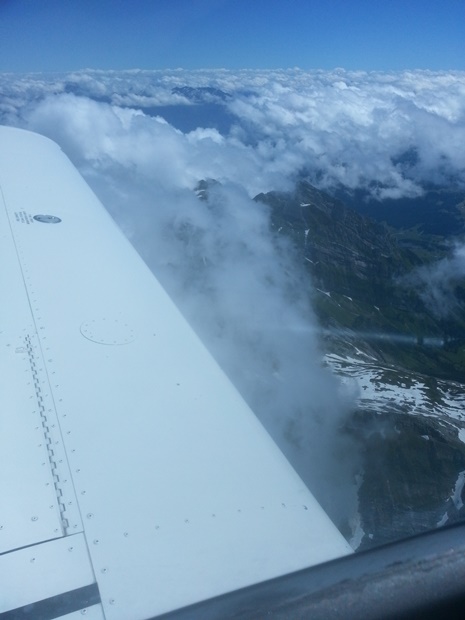
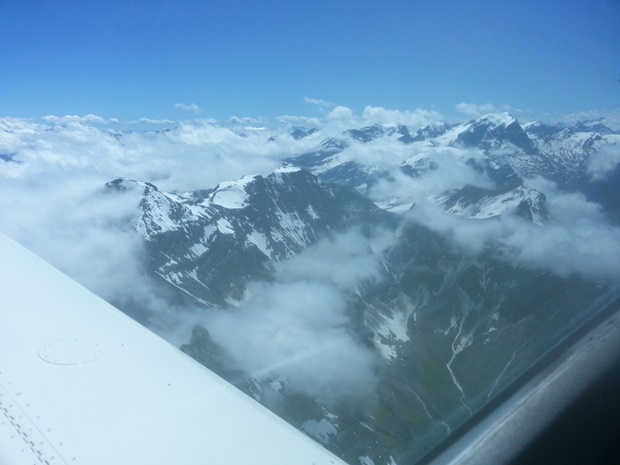

When I returned Dani was just preparing for yet another test flight, he will soon be finished with both his test flying and 25 hours shakedown period.
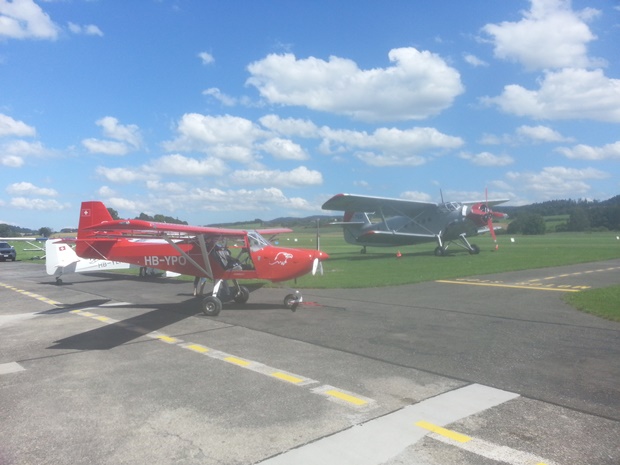
07.07.2016: The bi-annual check took place today, and the inspector found nothing but two minor paper issues which could be corrected in 30 seconds.
16.07.2016: As I have been working too much for quite a while now I decided to take two weeks off to visit the AirVenture in Oshkosh. I will fly next week to Chicago, and then spend a week at AirVenture followed by some other sightseeing before returning beginning of August. Items on the sightseeing list are the US Air Force Museum in Dayton, Ohio, as well as the Neil Armstrong Museum in Wapakoneta, Ohio, which is close to Dayton.
17.07.2016: I started packing my gear for Oshkosh today, which includes tent, sleeping bag etc. as I intend to camp at AirVenture, so quite a few things to think of. The weather was however too nice today to stay on the ground, so I did a little tour with my plane.
I recently switched from PocketFMS to EasyVFR for fight planning.

Both are from the same company, with the later one being the replacement of the original product which is considered obsolete by the supplier. To check how the downloading of a route to my Garmin GPS695 works I did a little flight planning for today’s tour, all the way to Mont Blanc, then Matterhorn and back again.
EasyVFR runs on both PC and tablets, but is definitely designed for the latter. For flight planning I prefer using it on the PC, but it does not anymore have a function to send route data via USB to my Garmin 695. It only produces route data in .GPX format, which can however not be read by the Garmin. I found a web service which converts .GPX routes to .FPL format for Garmin devices, which can then be stored on a memory card to be loaded into the Garmin 695. One just has to send the .GPX route as attachment in a mail to plogs@flylogical.com, and then receives a return mail a minute later with the .FPL file. That works fine for PC users, which can then copy the file to the memory card. If you are using EasyVFR on a tablet, especially an iPad, there is no possibility to store the .FPL on a memory card “thanks” to Apple’s continuous attempts to keep you in their own world. I do however want to have the flight plans in my Garmin 695, as first of all it is better readable under sunlight conditions than an iPad, and also because it is connected to my autopilot. If anyone has a solution for this please let me know.
Already after takeoff it became clear that this will be a very nice flight, with excellent visibility, calm air and very few clouds.
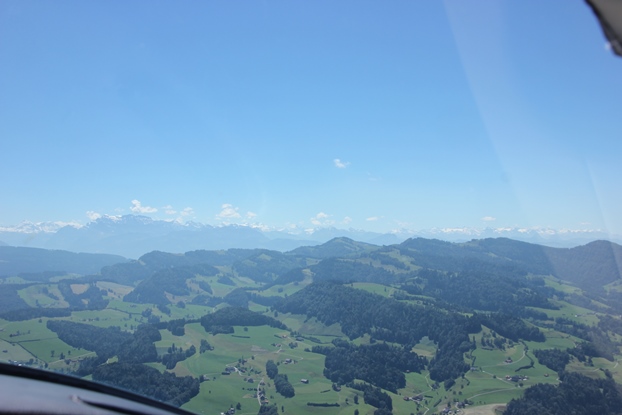
I flew via the Lake of the Four Cantons,…

…then over Lucerne…

…and along the Bernese mountains…


…with the Jungfrau Joch, of which I have posted pictures many times.
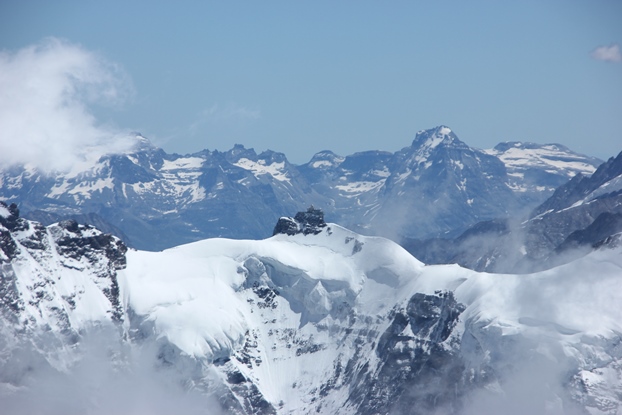
I flew between 12’000 and 13’000 ft for nearly two hours. According to the newest European rule “NCO.IDE.A.155, Supplemental Oxygen – Non-Pressurized Aeroplanes”, one has to use oxygen if flying over 13’000 ft, or over 10’000 ft for more than 30 minutes, unless the pilot can judge that this is not necessary. At least for myself and my wife I can definitely judge that it is not necessary.

I then headed towards Mont Blanc, but later did a crossing of Sion CTR to head south toward Monte Rosa, the highest mountain in Switzerland.



From there I passed numerous mountains of which I don’t know the names, most of them are more than 4’000 m / 13’000 ft high.

Ahead on the right the Matterhorn, “destination” of my little tour.



From the Matterhorn I headed back, still flying over 12’000 ft.


Near the Aletsch-Glacier I met a glider (he looks closer than he actually was on the picture below), he must have been at 13’000 ft or higher. I did see him thanks to the angle before the FLARM indicated the traffic, but in other light conditions, or if flying at nearly the same altitude that might have been more difficult.


Below the north portal of the new, 57 km long Gotthard railway tunnel, which only opened two weeks ago.

I returned via the usual route, passing the Tödi…

.. and Vrenelis Gärtli..

…before starting a long an shallow descent from 12’000 ft to 3’500 ft, the approach height in the Sector South of Lommis.
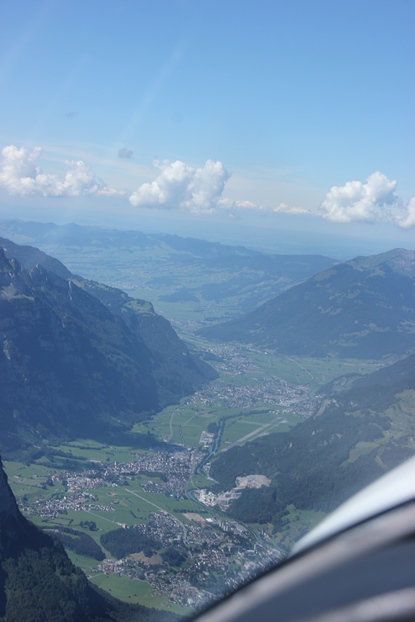
I finally landed after 2:49 in the air, a fairly long sightseeing flight.
21.07.2016: I’m off to Oshkosh. As noted earlier I will spend a week at Oshkosh, followed by a trip to Dayton, Ohio to see the National Museum of the United States Air Force, as it is officially called. I was flying today from Zurich, where there was nice weather, but little traffic…

…to Chicago, where there was even nicer weather, and a lot more traffic.

From Chicago I rented a car, heading towards Oshkosh.
24.07.2016: The last three days the weather was quite rainy, so I slept in motels and did mostly indoor sightseeing, but today I pitched my tent at Camp Scholler, as the campsite is called at Wittman Regional Airport in Oshkosh. The campsite is reserved for EAA members, and ideally located as one can walk to the AirVenture.

I spent the afternoon at the AirVenture site, even though it only officially starts on Monday, as most attendees who arrive by plane arrive on Sunday. It’s always fascinating to sit at the runway edge and to observe planes landing in 60 second intervals, amazingly coordinated by the guys on the tower.



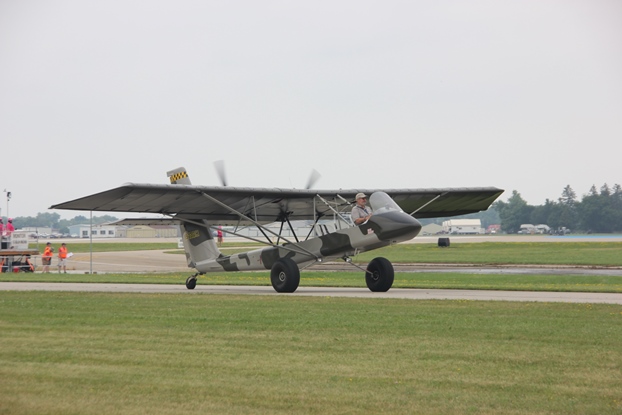
Below a queue of planes on the taxiway leading to the various parking areas. You can pick your parking area by showing a printed sign to the marshallers and they will direct you there by hand signs.

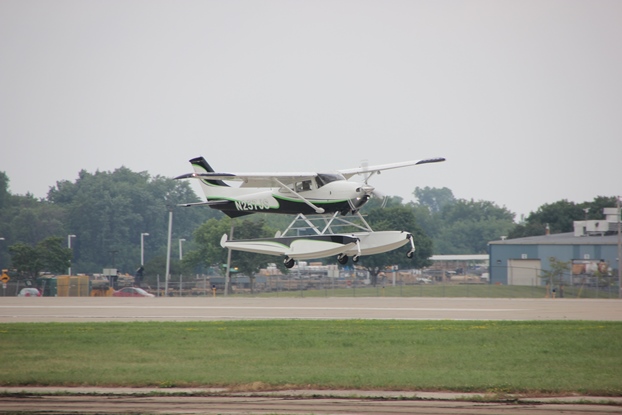
25.07.2016: From the weather forecast it was clear that it that there will be a lot of sun during the week, so I first went to buy a hat as I had forgotten mine at home. Below a selfie with my new hat, doesn’t it look a bit like Indiana Jones? 🙂
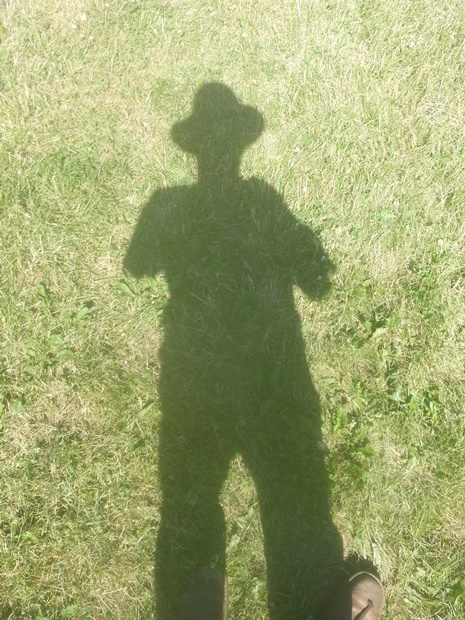
There are a number of exhibition areas at AirVenture, in one of them most kit manufacturers are grouped. Not that I have the money to build another plane (which I would like to do), but one can always have a look what “could be the next project”. One plane I like very much is the Sting from South Africa. It is fairly similar in it’s concept to the SportCruiser, a two seat, side by side, low wing design built from riveted aluminum.

There is now also a four seater, which would make a superb travelling plane for two with ample baggage space and capacity. Flying it with four seats on a Rotax 912 might be a bit at the limit, but with two and baggage I’m sure that’s no issue. The Sting kits are extremely well designed and build, as can be seen below.

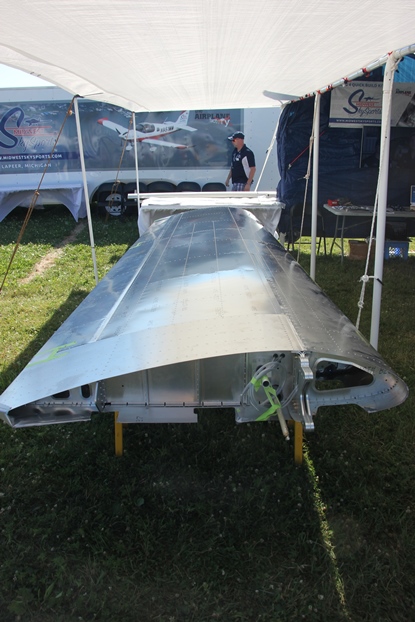
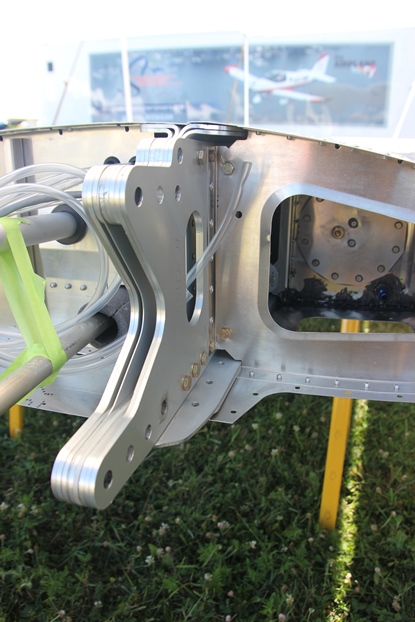
All pieces are pre-packed, many are pre-formed and drilled, and the kit comes with an excellent builders manual.
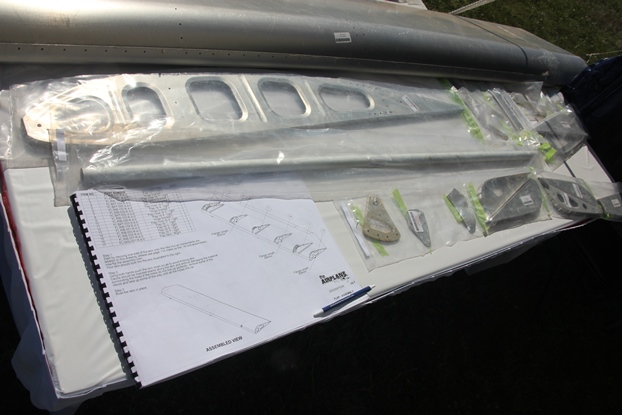
They are using the fuel injected version of the Rotax 912, the 912 is, which gives you an even lower fuel consumption than the carburettor based version and automobile like operating comfort. Rotax only recently announced that they are going to produce a turbo-charged version of the 912iS, the 915iS, that might be a good choice for the four seater as it has 135 hp, and delivers them up to 15’000 ft.
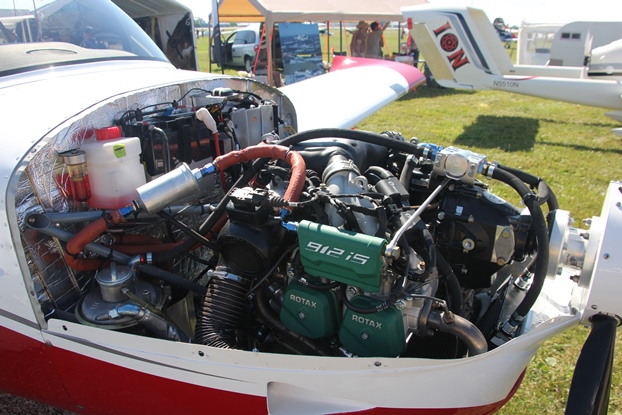
Another very nice kit is the RANS S-19, one I considered building as my original project, but at that time the kit was only under development and Randy Schlitter, the owner of RANS would not commit on a delivery schedule at that time. Being an engineer I fully understood that at that time, and it finally took indeed longer than I would have been ready to wait for to get the kit to the market. The final product is however an excellent kit, similar to the Sting above.

I had a long chat with Randy, who remembered me going to see the factory in November 2006 to look at the kit of the S-19, which was under development at that time. When I was there I flew some of the RANS designs, both with Randy and with one of their flight instructors. RANS is developing a new plane, the S-21 Outbound below, which looks like an excellent concept. It’s based on an aluminum wing and rear fuselage combined with a steel tube cage cockpit, which will however also be aluminum covered, not fabric as one would expect for a steel tube design. It is also a two seat side by side design, with excellent load carrying according to the specs, so again a good travelling plane, but unfortunately they are using a Lycoming engine. But maybe the Rotax 915iS could be a choice too.
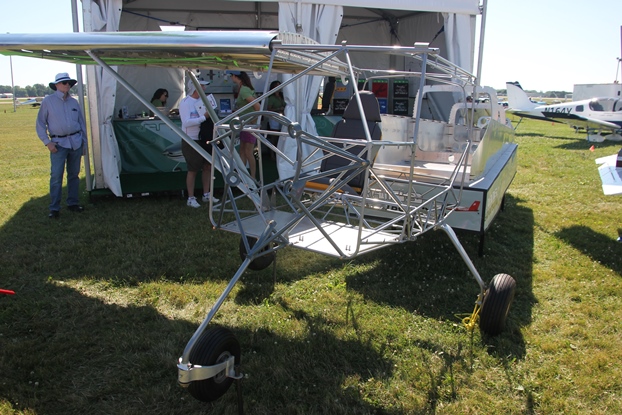
A bit further down in the warbird area I saw two ex Austrian Air Force Pilatus Turbo Porter, one of them with a crazy paint scheme. That would of course be the ultimate travelling plane from the cargo capacity point of view, but unfortunately out of my league from a budget point of view 🙁

Back in one of the main exhibition buildings I saw an innovative opposed piston engine design where the pistons movement is turned into rotation by a novel scheme. I’m aware that some similar engine designs have been attempted in the past, but this one has gone a step further in simplicity, reducing parts count to a minimum. I will be interesting to see whether this ever turns out to be a successful product.

I also went to a number of homebuilder seminars today, such as one on a project to build your own avionics and one on a CAD tool which can be used to design aircraft and which is free of charge for EAA members.

The great thing about Oshkosh is that there is always something going on, even without any announcement, such as a sky-writer flying high above….

And all of that controlled by what they call “The world’s busiest control tower”.

In the exhibition area for ready to fly aircraft I of course also went to the Czech Sport Aircraft booth where they exhibited several SportCruisers.
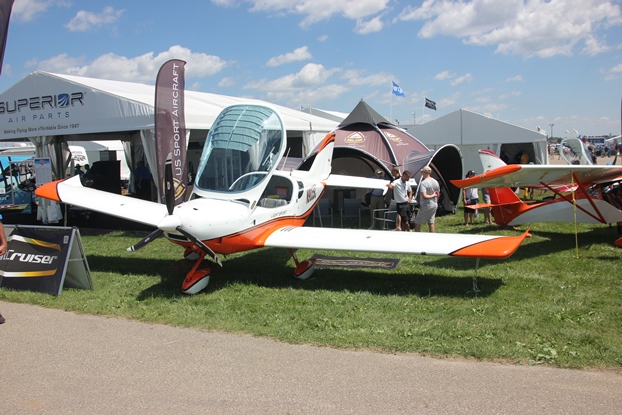
Below the newest cockpit layout, with the Dynon SkyView and a Garmin GPS. Unfortunately none of the Czech guys I know was present, and as they don’t make kits anymore they are not in my primary focus. But it’s always interesting to see what they are doing in improvements to the SportCruiser.

During the afternoon airshow there was the first demonstration of the Martin Mars flying boat, one of the highlights of this year’s AirVenture. With a wingspan of over 60 m / 200 ft it is one of the largest aircraft ever built and the largest seaplane that ever went into service. Out of four built two are still being used as water bombers to fight forest fires.

Of course they did a water dropping demonstration, truly impressive.

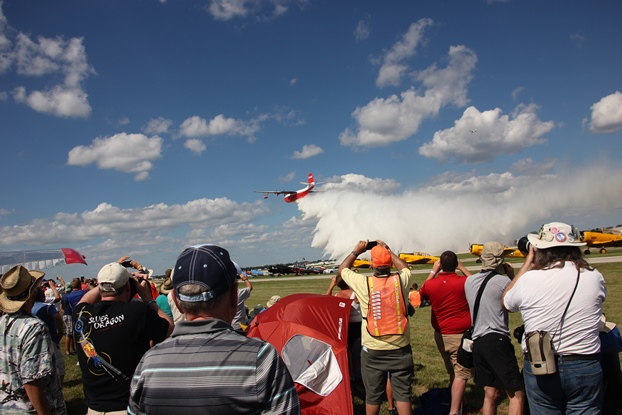
There were many other highlights during the afternoon airshow, such as the formation flying of a P-51 Mustang with two F-16s,…
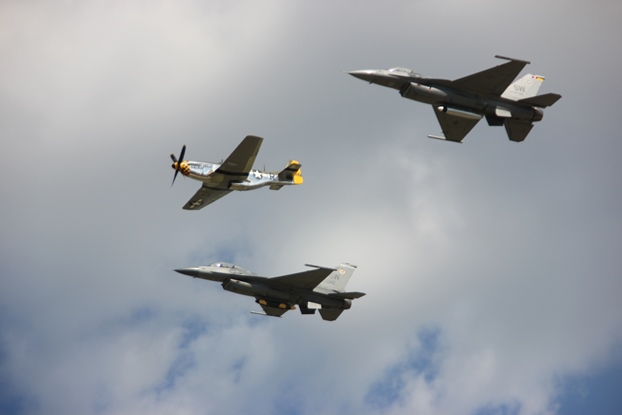
…a plane that lands on a driving truck…

…and of course lot’s of aerobatics, including one with a wing walker.
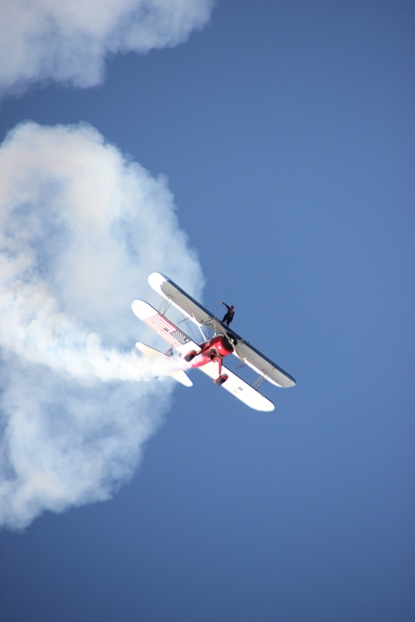
The static display was quite impressive too, including the only flying B-29.


Below a lineup of homebuilts, as typical for Oshkosh one can freely walk between the parked planes to have a closer look.


26.07.2016: Also on the second morning of AirVenture I was greeted by great weather.

I took the time to stroll through the exhibition area where I saw a booth with a SportCruiser copy from China. I knew that Chip Erwin, the original designer of the SportCruiser had started a joint venture with a US company some time ago to set up a factory in China, but had not heard that they ever reached production status.

I started chatting with the owner of the company, Tom Hsueh, learning that they are getting close to certifying the plane, which they call the Skytrek, and starting series production. I also learned that Chip is out of their cooperation. When he learned that I’m as SportCruiser builder he asked me to do a detailed review of the plane, as they could still to some smaller refinements. Below my comments:
The first thing one notices when sitting in the plane is the panel, which is now from composite rather than aluminum. That’s one of many refinements to lower the empty weight, which they are claiming to be 821 lbs / 372 kg, which is slightly below the weight of my plane. But that’s without the BRS system, autopilot etc., so not really significantly lower than the Czech built original SportCruiser. It does however include the Rotax 912iS with fuel injection, dual screen SkyView avionics and some strengthening of the structure.

The plane incorporates many positive small changes, such as a grip to pull down he canopy, and a small guide to better align the canopy with the frame, both nice improvements.


One thing I absolutely did not like are the sports car type bucket seats. They might look sexy to some, and might be good for car racing, but are definitely not comfortable for longer flights. They are also reducing headroom, making me nearly touch the canopy even without headset. Finally there is no need for a bucket seat in a plane, unless maybe in one used for extreme aerobatics, as there are no lateral accelerations as in a sports car. Tom agreed with me that the seats are not optimal, and told me that they are considering changing them. I’m sure that this would also lead to another reduction of the empty weight.

There is a bat cave type extension into the rear fuselage, which can be used to carry light, but long pieces of equipment, such as fishing rods. Sandro, the other SportCruiser builder in Switzerland installed a similar bag, which was once designed by Czech Aircraft Works, but never made it into the series production on the SportCruiser.

The biggest visible change is however a completely redesigned nose landing gear. With that they are eliminating what is probably the weakest point of the original SportCruiser, where the nose landing gear went through two complete redesigns due to several ones having been bent during harder landings.

Tom also told me that there are several less visible changes, such as redesigned ailerons and a new elevator setting, which makes controls more harmonised.
All in all some good changes, except for the seats, I would be interested to fly the plane to see how those changes feel in flight.
More information can be found on the website of the company, iflyairplanes.com.
Back at the exhibition there was an Airbus 320 visiting, and in front Airbus has placed their electric experimental plane called the e-fan. More about that one further down.

I also went to have a look at the Lockheed C-5M Galaxy. That’s indeed a huge plane, recently being converted to new, modern engines which not only made it cheaper to operate and more reliable, but also increased performance dramatically.
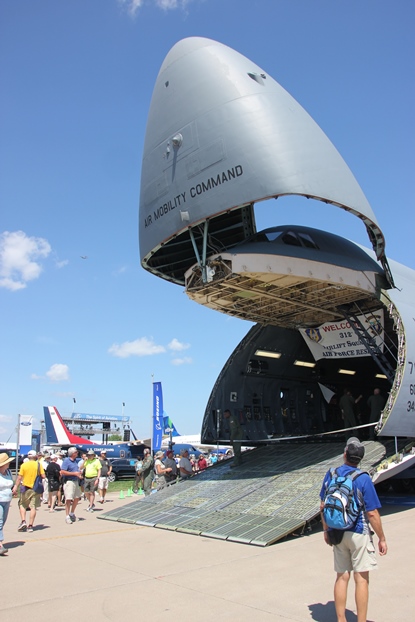
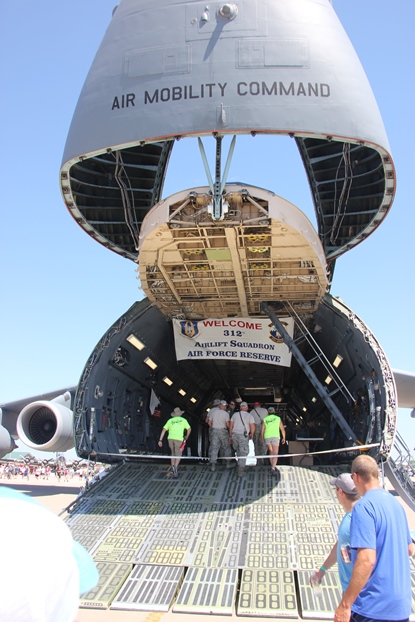
Another military fly-by, an A-10. Military pilots are allowed to go and visit AirVentrure on routine training flights, so there were quite some F-15s, F-16s and other jets parked at the far end of the airport.
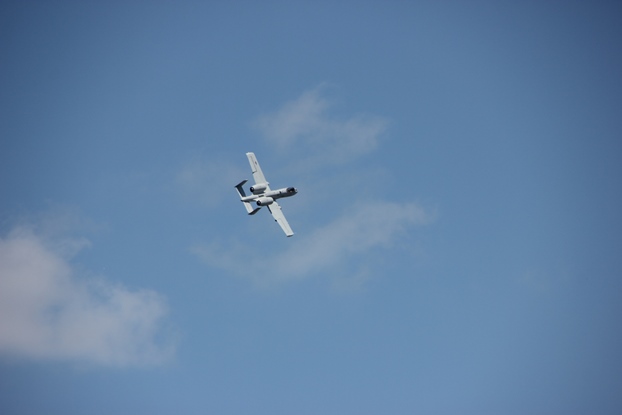
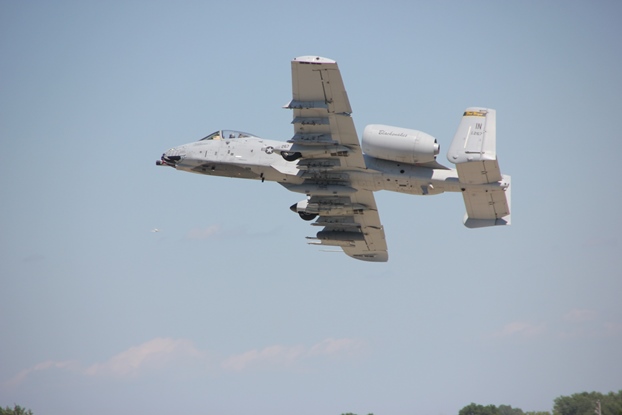
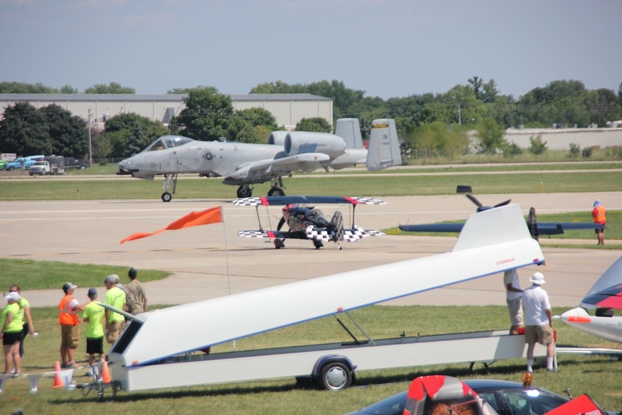

During the day I also went to a number of presentations.
The first one was on SolidWorks, a popular 3D CAD program from Dassault Systèmes, which is also widely used to design light aircraft. EAA members can now get the basic version of SolidWorks free of charge.
Then I went to one called “Design of Single Engine Aircraft” from Peter Gall, who gave some great insights into the basic steps to design an aircraft starting from performance requirements.
Finally I went to one from the Federal Aviation Administration on the security of GPS/WAAS, which was very interesting to me as I am the technical coordinator of a European research project on the usage of GPS for safety critical applications on railways. There were some clear statements on keeping a sufficient number of VORs and ILSs across the US in service for at least another 20 to 30 years as a fallback in case GPS is being either jammed or fails, so that in such a case all planes can be safely brought to the ground.
Once the regular daily program and airshow was finished there was a great concert from Survivor, whose most successful hit was “Eye of the Tiger” from the film Rocky.
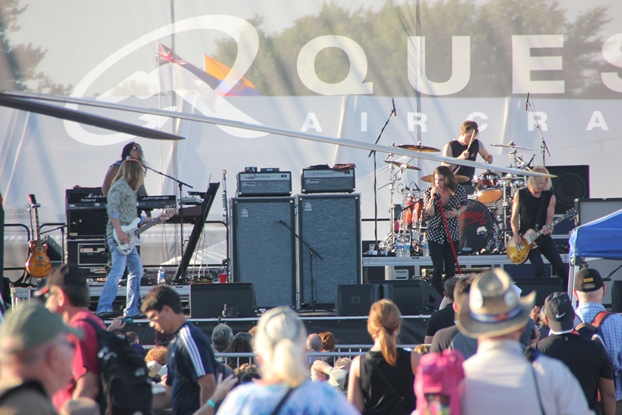
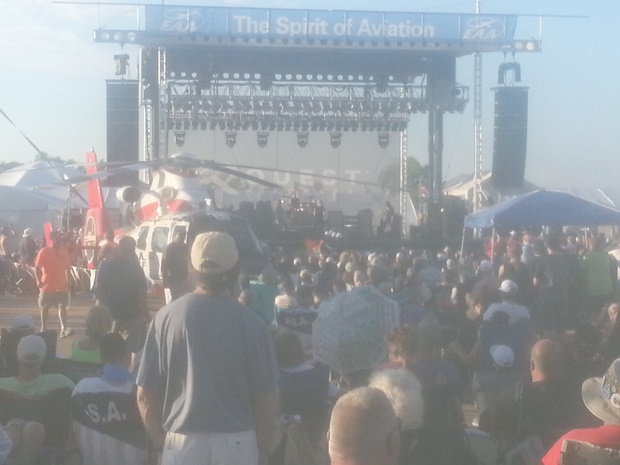
When leaving after the concert I passed a privately owned Embraer Phenom business jet painted in a Star Wars scheme, including Han Solo’s helmet on the pilot’s seat. Something like that is only possible in the USA.

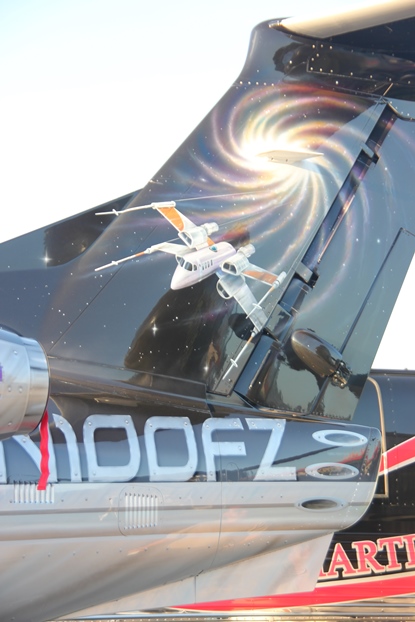

Imagine what the reaction of a European aviation authority would be to have a fuel cap marked as on the picture below…
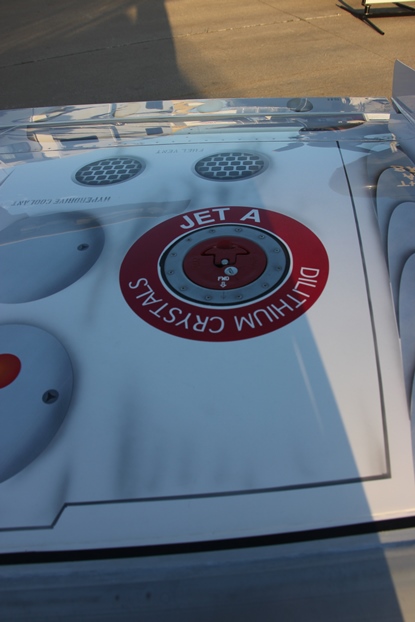

27.07.2016: Another sunny morning, started by making me a coffee on my small gas stove. I also used it to cook on several evenings, as you can’t always eat hamburgers.
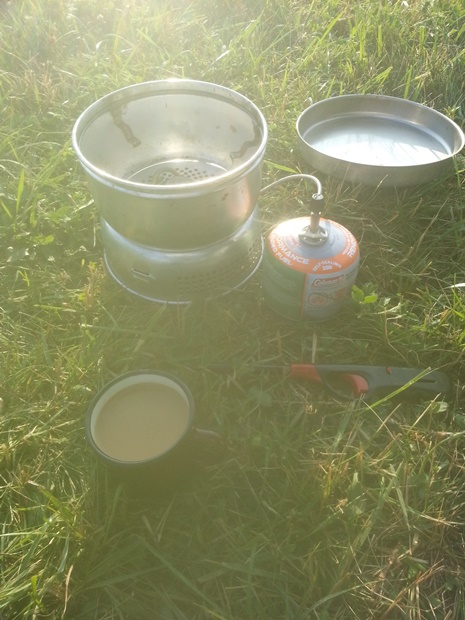
Today I started the day by attending a presentation from Airbus on the e-fan and the general outlook of electric propulsion for large aircraft. I found it interesting that they started the e-fan explicitly to learn about the challenges of electric propulsion, being convinced that this is done better trough a hands-on real project than just paper-studies.

I then spent some hours looking at planes, occasionally interrupted by major airshow highlights such as the second demonstration of the Martin Mars.
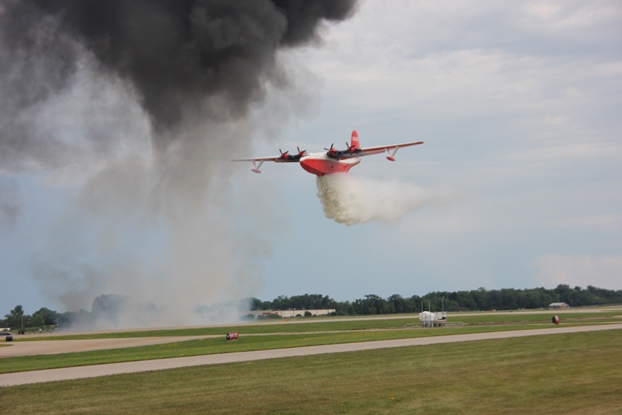
28.07.2016: This morning I met strange birds when walking from my campsite to the main entrance, some kind of cranes with babies. They probably wanted to show their kids all those strange flying objects…

I first went to Airbus to have a closer look at the e-fan. They told me that their prototype is not about analysing the efficiency or electric propulsion, which can be done with simulations, but more about developing new concepts and control systems. They are for example also testing how to distribute high voltage power in a carbon fibre structure, and related problems, before attempting to build a larger aircraft. They recently converted the plane from an initial purely electric configuration with batteries to a hybrid propulsion system with a small two stroke engine and smaller batteries for peak power, as that’s the way they believe electric propulsion will go.
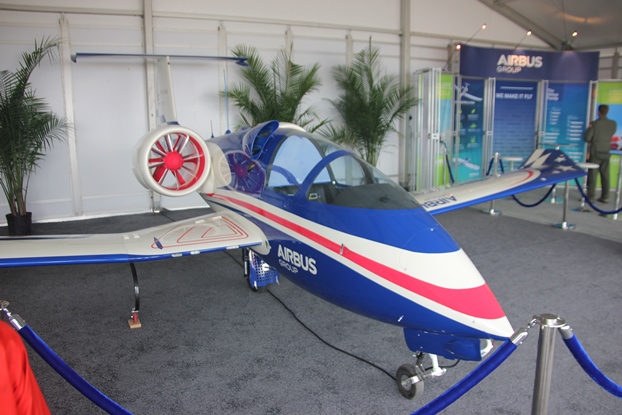
The I went to see Chip Erwin, the original designer of the SportCruiser from whom I bought my kit in 2006. He has a new project, again an all aluminum riveted plane, but this time a high wing single seater. It has a lot of baggage space, but unfortunately not too much loading capacity.
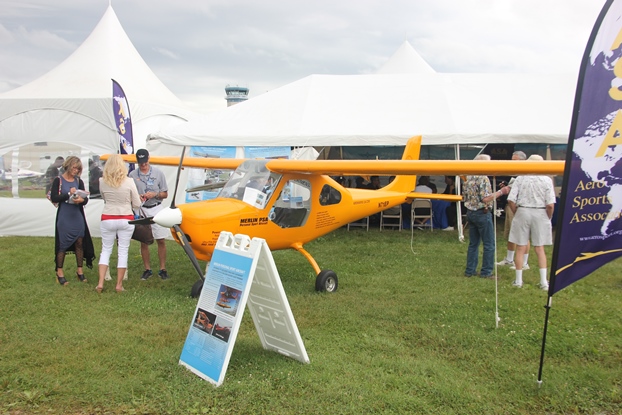

I tested sitting in it, for once a high wing plane where I can look outside without having to make the weirdest moves.

More information can be found on http://www.aeromarine-lsa.com.
I also went to see the Coast Guard planes, including one of their C-130J Hercules, which is used for search and rescue operations. The cockpit is huge, with three operators behind the pilots, sitting in front of pretty big radar screens.

I had a longer chat with the pilots, both being much younger than the original C-130 plane. But the one they are flying is an HC-130J, delivered from 2003, so pretty modern as can be seen below.
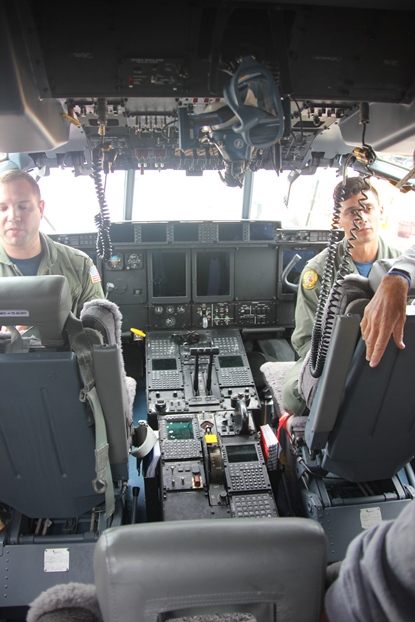
I was interrupted by a small demo flight of an F/A-18, flying nearly continuously on full afterburner….

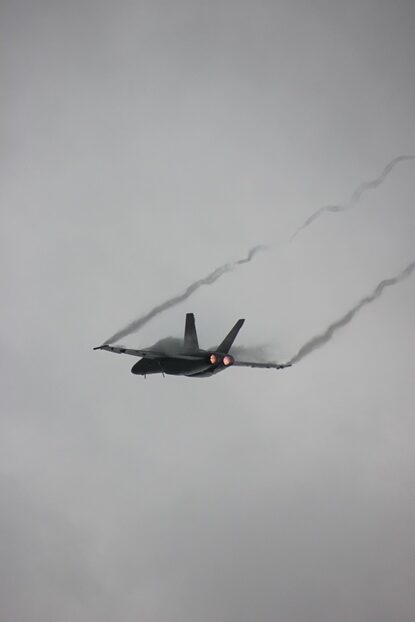
There was a concert again in the evening, Road Trip, a local band from Wisconsin. Note the Coast Guard crew watching the concert from sitting in chairs on the wing of their Hercules, definitely the best seats.
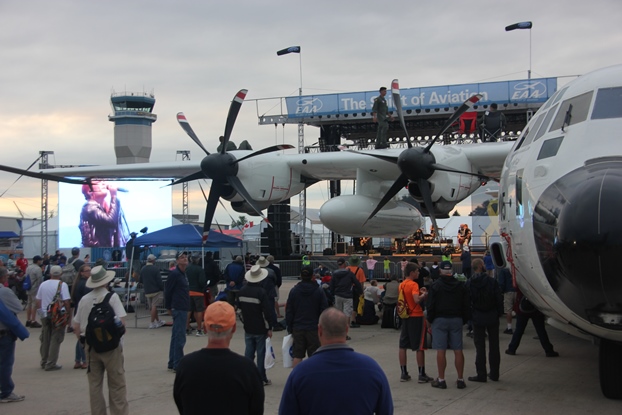
On the way out I picked up a copy of Trade-A-Plane, which had a SportCruiser on the front page.
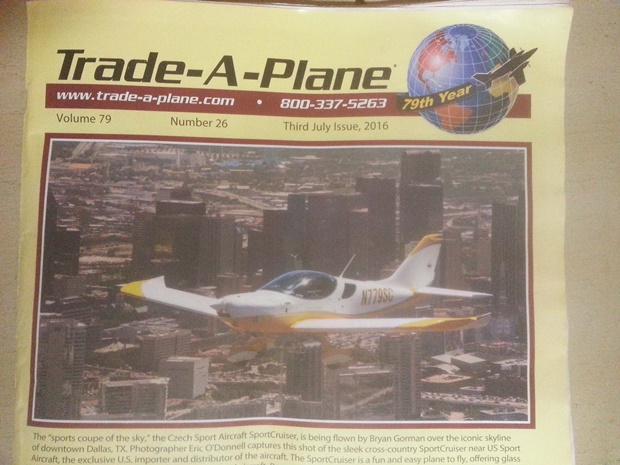
29.07.2016: I decided to take a helicopter ride this morning, to have a view on the whole AirVenture site from above. They are offered for only 45 $ with Bell 47’s, the most build helicopter in the world and today a historic aircraft. I checked yesterday the availability of flights and they told me that you just have to show up and wait in line, and that the waiting time can be significant unless you show up very early in the morning. As my tent was only ten minutes on foot from the location where flights depart I decided to do that.
What I did not consider was the weather, which was for once cloudy, with a cloud base low enough to declare the airport IFR. Not that planes were not flying VFR below the cloud base, but the helicopter rides are being performed as commercial flights, meaning they can’t fly under the special VFR rule. So we had to wait for about an hour for the cloud base to lift sufficiently before flights could start.

The flights follow a predefined route staying west and south of the approaches to the two runways. so they don’t interfere with airport operations. Below a view over Camp Scholler, the member campground.

My tent is visible in the two pictures below, along a bigger empty field which was used for parking cars from external visitors during the weekend, where visitor number peak. The rest of the week the field remained empty, making the spot fairly quiet at night.

Below my tent, it is the green one in the middle of the picture. I stayed there the whole week, but my both of my neighbours changed around mid-week as many attendees can’t stay the whole week.

Below the main exhibition area, with two large exhibition buildings on the left side. There are two identical ones on the right side, but which are only partly visible on the picture.

Below the both of Chip, who I visited yesterday.

Aircraft parking is organised according to certain schemes, below two pictures of the area for homebuilts. On the upper picture three green buildings are visible, part of a group of around twelve similar buildings where most workshops and presentations take place.


Below a picture of the EAA museum, which I also visited today, with lot’s of milestone aircraft from the homebuilders movement on display. In front of the museum there is a grass runway with some vintage hangars visible on the right side of the picture where some historic aircraft are being kept that are in flying condition. That’s also where the helicopter rides start. During the rest of the year they are also providing rides in other aircraft from there.

Below the main north-south runway of Oshkosh, with lake Winnebago visible in the background. There is also a second large runway oriented east-west, which is just outside of the left / bottom corner of the picture.


After the helicopter ride I went back to have a look at the planes on display, which included many from the U.S. Coast Guard as they were also celebrating their 100th anniversary.
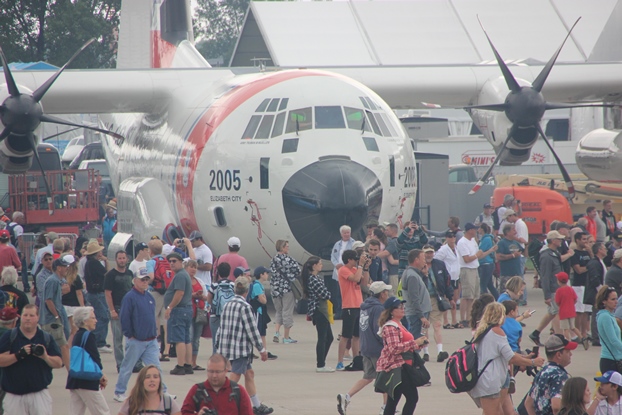
They were also preparing the Galaxy for departure, which included loading all the ground handling equipment into it once it was pushed back to the runway as the equipment available at the airport can’t handle such large aircraft.

Waiting for the Galaxy’s departure I watched other planes arrive and depart, which was a good demonstration of the variety of aircraft participating in the event. For ultralights, powered parachutes etc. there is a separate grass runway, with approaches that don’t interfere with the other traffic. Them using the main runways would be disruptive to normal operation because of their much lower speed.
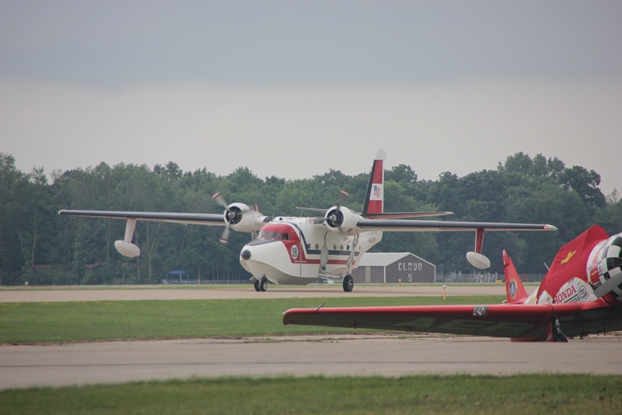
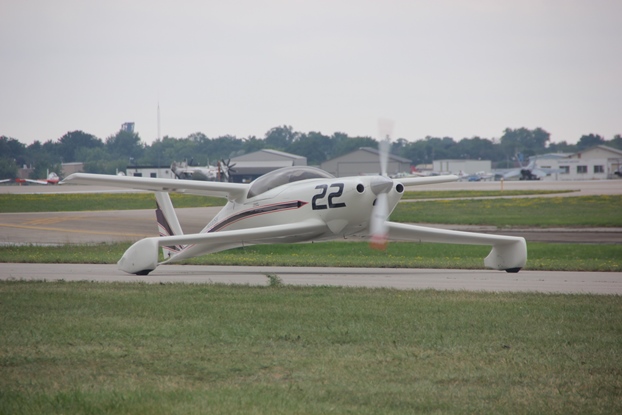
Below the Galaxy’s departure, with many homebuilts waiting to use the same runway. Regardless of the wind such large aircraft have to depart towards the south due to their wake turbulence, which could turn over small aircraft parked near the runway or waiting on the taxiway.
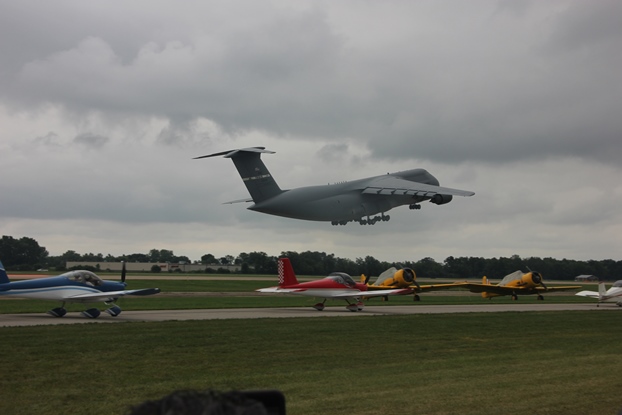
I also went to see some of the larger seaplanes, toys for people with too much money.
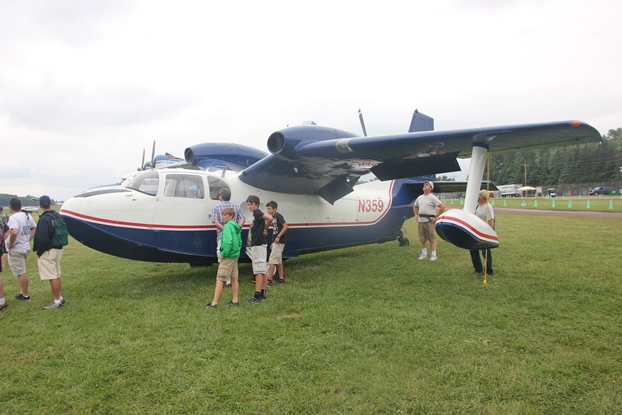

For departure control hey have a small tower crew at the departure end of the active runway, with most instructions being given by hand signs. Pilots have to monitor the departure frequency and only the clearance for the takeoff is given by radio, as well as instructions how to proceed after takeoff.
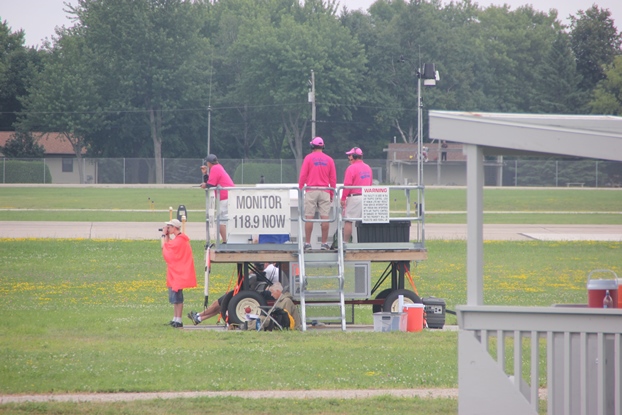
Planes are sometimes taking off in 20 seconds intervals, impressive to watch.

Below more toys, maybe one day I will win the lottery…


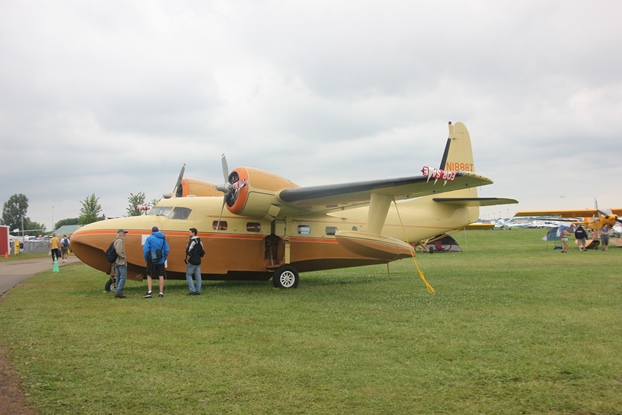
There was also a short fly-by of a Lockheed U-2S, the “modern” version of the U-2 spy plane from the fifties.There are still around 30 U-2S in service.
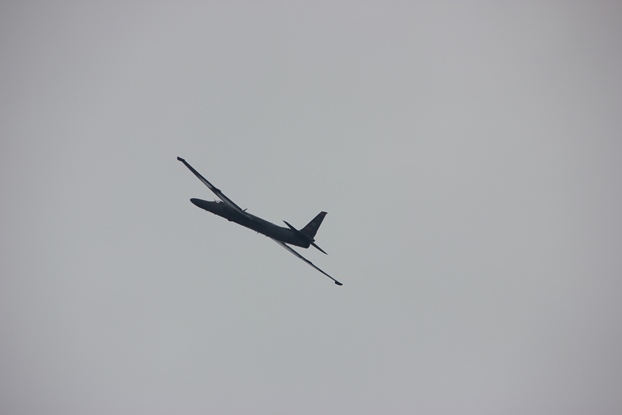
One aircraft I absolutely had to have a closer look at was the Grumman C-2 Greyhound, a cargo aircraft used by the Navy to bring supplies and passengers to aircraft carriers. It had it’s first flight in 1964, but those 30 still in used today are all from a second batch which was produced in the late 80’s. Even those newer ones are around 30 years old, not bad considering the heavy wear associated with carrier operations.



30.07.2016: When walking through the exhibition area this morning I saw a panel showing Cessna’s new Denali aircraft, which seems an exact copy of the Pilatus PC-12. They are even marketing it as the PC-12 killer, probably a reaction to Pilatus entering the jet market with their PC-24, which will be a tough competitor to the Cessna Citation series.

I then took a bus to drive to the seaplane are on nearby Lake Winnebago. The lake is about the same size a Lake of Constance, but less than 6.5 metres / 21 feet deep at it’s deepest spot. There is a small cove on a private piece of land which is being used as temporary seaplane harbour during each year’s AirVenture. Planes are being parked on buoys in the cove…


…but take off and land on the lake outside the cove.
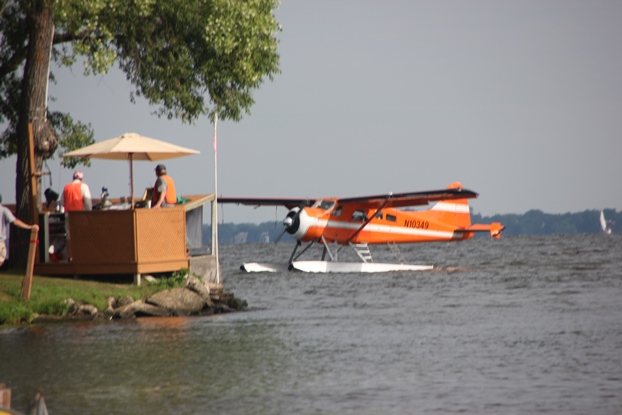


Also on the lake parked was the Martin Mars, as it is too big to enter the cove. There were some floats with pumps moored next to it, as they had a mishap on the day before. They took off for the airshow, then picked up water for the dropping demonstration, but while they were picking water one engine started making problems. They decided to land without dropping the water, which resulted in more draft than when the plane is empty, and due to the very shallow depth of the lake they hit something, puncturing the hull. They were in process of doing repairs, but had to cancel their airshow participation for the rest of the week. Luckily I went to see it twice during the preceding days…
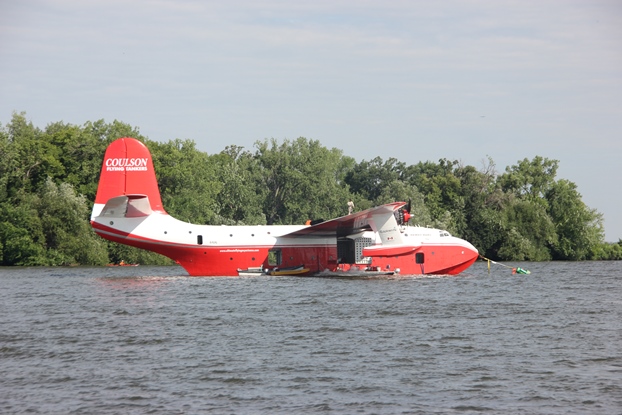
In the afternoon Cathay Pacific flew in one of their new Boeing 747-8 cargo planes to help celebrating the 100th anniversary of the Boeing company. The station manager of Cathay Pacific in Chicago is an EAA member, and so are the two pilots, and they managed to get permission from their company to do a little side trip to Oshkosh during a layover.


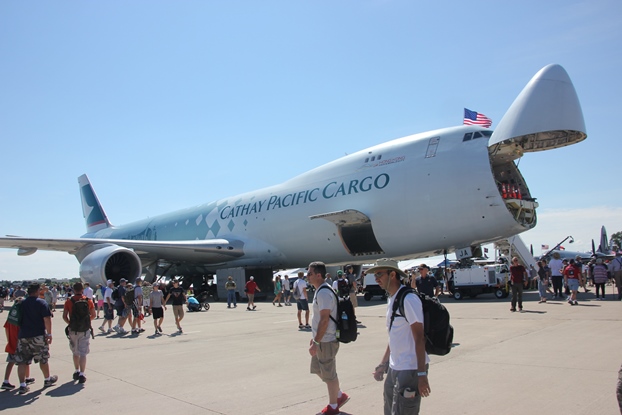
Today I spent most of the afternoon in the exhibition area, and only went to the airshow towards the end of the schedule to see one of the highlights of this year’s airshow, the Canadian Air Force’s Snowbirds. They did an impressive demonstration with their nine Canadair Tutor jet trainers, which could have been parked in the vintage area as they are over 50 years old. This years AirVenture was anyway dominated by the Canadian’s; also some other aerobatics teams as well as the Martin Mars came from the northern neighbour.





Later in the afternoon the 747-8 had to leave again, which took quite some manoeuvering to get it out of the exhibition area.

Like the Galaxy some days earlier they had to start their takeoff roll with reduced power not to blow away some of the smaller planes, and only to apply takeoff power once they were a few hundred metres down the runway.

Another busy day in Oshkosh, ending with a nice sunset. There are by the way also evening programs, including speeches, movies and even a night airshow on some evenings, but I was usually too tired to attend any of them.
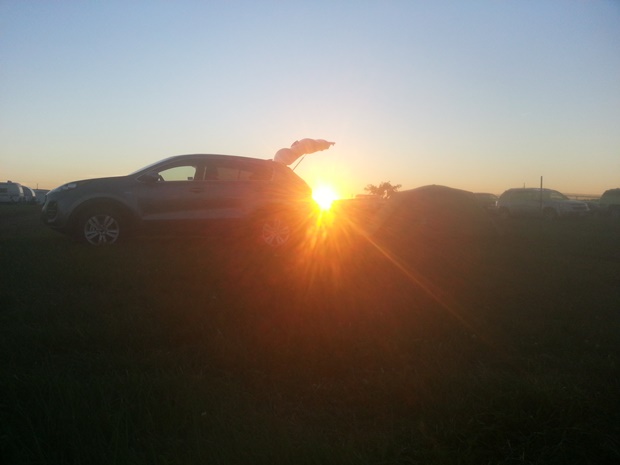
31.07.2016: I have spent a great week at AirVenture, and contrary to my original intention I finally stayed the full week. There is always so much to see, and going on, that even after the full week there are some things left that one would have liked to see too. I’m sure I will be back in two or three years.